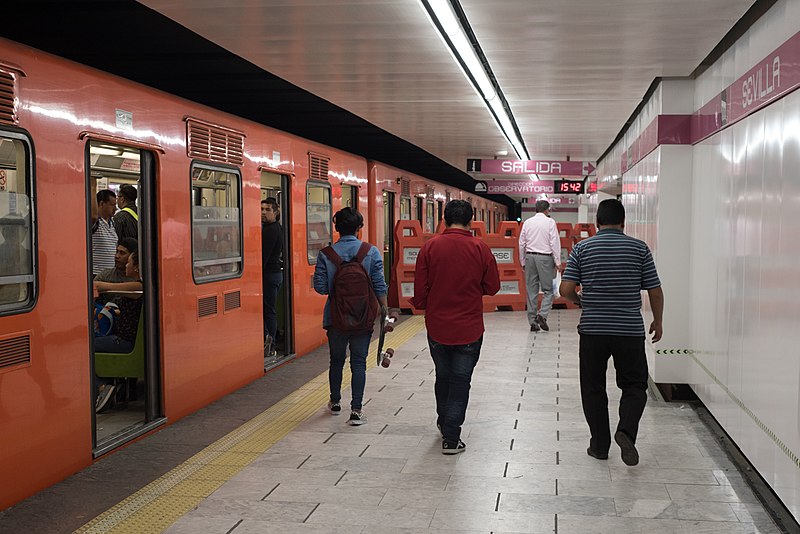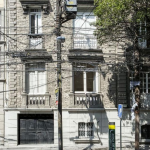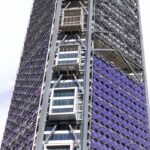
_

Metro Sevilla is the second most popular station for the Zona Rosa, and also for the top of the Roma Norte/Condesa neighborhoods. It serves as a busy commuter station for all the people working on the middle stretch of Paseo de la Reforma, too.
The station logo shows the Chapultepec aqueduct. The remains of the water channel still stand in the median strip between the two lanes the Avenida Chapultepec. Remember, the aqueduct was delivering water to both the fountains of Chapultepec which is near Metro Chapultepec. The aqueduct from here continued all the way down the avenue to Salto del Agua, at the edge of the City center.
The station name comes from the important street of Sevilla. Many of the streets in the Juárez (Zona Rosa) neighborhood come from European cities. The neighborhood was laid out on the grounds of an old hacienda at the turn of the 20th century, .
The Metro Sevilla station opened in 1969. Since then, it’s been the key station for many of the sites along the Paseo de la Reforma. The Diana the Huntress fountain and glorieta are just a few blocks north. To the south of the station and of Chapultepec Avenue, are many of the galleries in Roma Norte. It’s also convenient to the very north of the Condesa neighborhood a little further along.
 unidad_de_orientacion@metro.cdmx.gob.mx
unidad_de_orientacion@metro.cdmx.gob.mx
 5627.4950 / 5627.4741
5627.4950 / 5627.4741
 https://www.metro.cdmx.gob.mx/
https://www.metro.cdmx.gob.mx/

0.31 kms.
0.34 kms.

0.35 kms.

Metro Observatorio is the end of the line in the city's west, but don't let that stop you.

At home in one of the city's strongest counter-cultural scenes, Metro Tacubaya is still rocking.

The monarch butterflies return every year to Juanacatlán in the Mexican state of Jalisco.

Close to the park and in the middle of everything, you'll be surprised what a weekend looks like from here.

One of the most important Metro stops in the City, you can't come to Mexico City without seeing it once.